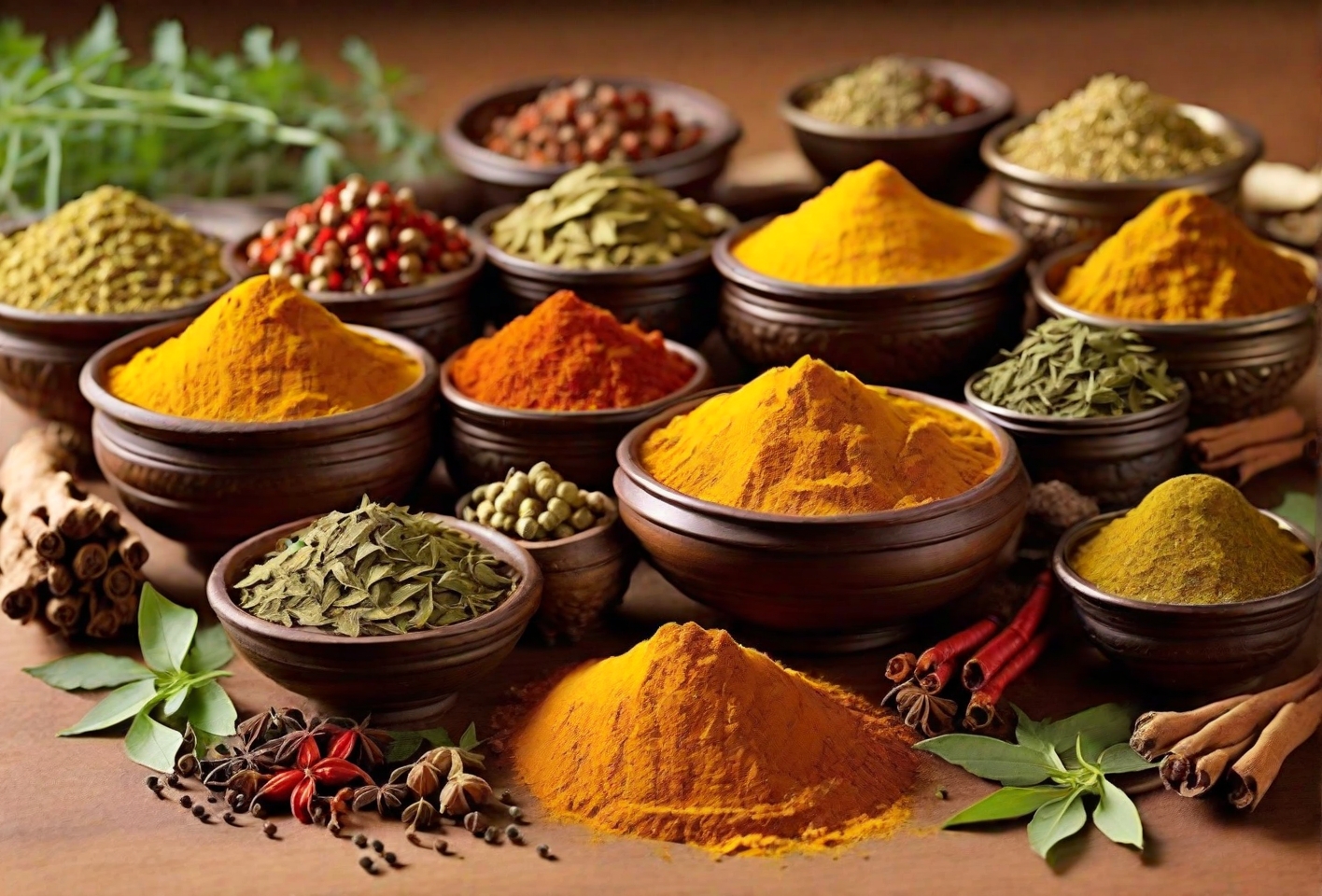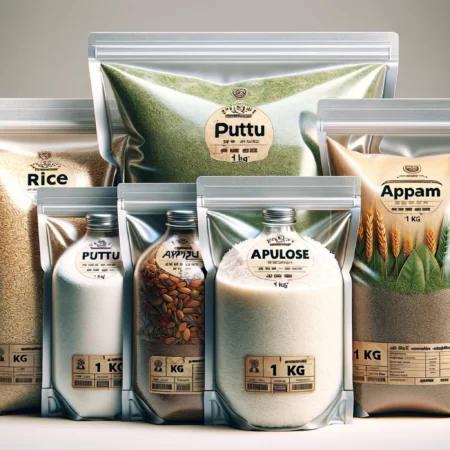
Spices
Indian spices are the soul of the country's diverse culinary landscape, adding not just flavor but also medicinal value to the dishes. Staples like turmeric, cumin, coriander, and garam masala are integral to a variety of curries, each serving a unique purpose. Turmeric, with its vibrant yellow hue, lends color and anti-inflammatory properties. Cumin and coriander often work in tandem; while cumin adds a smoky nuance, coriander provides a citrusy depth. Garam masala, a blend of spices like cloves, cinnamon, and cardamom, is usually added towards the end of cooking to give the curry a warm, aromatic finish. Fenugreek leaves and mustard seeds are also commonly used, the former for its slightly bitter undertone and the latter for its tangy kick. These spices are often tempered in hot oil to release their essential oils, enhancing their flavors before they meld into a rich, complex curry. The art of Indian cooking lies in the mastery of mixing these spices to create dishes that are as nutritious as they are delicious.

Clothing
India's diverse tapestry of cultures is vividly reflected in its traditional clothing, which varies significantly from state to state. In Kerala, the simple yet elegant 'Mundu' and 'Saree' made of handloom cotton or silk are popular, often adorned with a golden border. Punjab is famous for its vibrant 'Phulkari' embroidery on dupattas and 'Patiala' salwars. The 'Bandhani' and 'Leheriya' tie-dye techniques from Rajasthan and Gujarat add a splash of color to sarees and turbans alike. West Bengal is renowned for its intricate 'Kantha' stitch and 'Baluchari' sarees, often depicting mythological stories. Assam's 'Mekhela Chador' and the 'Puan' from Mizoram are woven with local motifs and designs, each telling a story of its own. In Kashmir, the 'Pheran,' a long woolen tunic, is a staple, often accompanied by intricate 'Aari' or 'Tilla' embroidery. The 'Paithani' sarees of Maharashtra and 'Kanjeevaram' sarees of Tamil Nadu are considered luxurious heirlooms, woven with rich silks and gold threads. Each state's traditional attire is a beautiful manifestation of its local history, art, and social fabric, making Indian clothing a fascinating subject of study and admiration.

Cosmetics
Indian cosmetics rooted in Ayurvedic principles offer a holistic approach to beauty and wellness, blending ancient wisdom with modern needs. These products often incorporate natural ingredients like turmeric, sandalwood, aloe vera, and various essential oils, each serving a specific purpose in skincare or haircare. For instance, turmeric is renowned for its anti-inflammatory and antibacterial properties, making it a common ingredient in face masks and creams aimed at reducing acne and brightening the skin. Sandalwood, with its soothing aroma, is often used in moisturizers and face packs for its calming and cooling effects. Aloe vera is a versatile ingredient that hydrates the skin and heals irritations, while essential oils like lavender or tea tree are added for their therapeutic benefits. These Ayurvedic cosmetics not only aim to enhance external beauty but also to balance the body's internal energies, or doshas—Vata, Pitta, and Kapha—thereby promoting overall well-being. The focus is on creating a harmonious relationship between the mind, body, and spirit, making Ayurvedic cosmetics a deeply nurturing experience.

Utensils
In an Indian kitchen, you'll encounter a diverse array of utensils designed for specialized tasks. A Tawa or Tava is primarily used for making flatbreads like chapatis and parathas and is often made of cast iron or non-stick materials. Pressure cookers, usually made of stainless steel or aluminum, are indispensable for cooking lentils, rice, and meat, significantly reducing cooking time. The Kadai, similar to a wok, is versatile and used for deep frying, sautéing, and making curries. Handis, traditionally made of clay but also available in metal, are employed for slow-cooking dishes like biryanis and pulaos. For rolling out dough for flatbreads, a Belan or rolling pin and a Chakla or rolling board, usually made of wood, are essential. Mortar and pestles are used for grinding spices and herbs, and they come in various materials like stone, wood, or ceramic. South Indian cuisine often requires an Idli Steamer for making steamed rice cakes and a special Dosa Pan for making dosas. A Puri Press, typically made of stainless steel or cast iron, is used to flatten dough for making puris. For storing everyday spices, a Masala Dabba or spice box, usually made of stainless steel, is quite handy. Tongs, known as Chimta, are often used for handling hot pots and pans, as well as for flipping rotis. Sieves made of stainless steel or plastic are used for sifting flours and straining liquids, while a Jhara or skimmer, is used for draining excess oil from fried foods.



